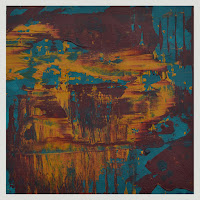Last year the Surrey Artists’ Open Studios, had a launch event at East Surrey College. I took advantage of listening to an interesting talk on photography with Lillian Spibey and had an opportunity to create an oil piece for Liz Hauck’s installation. Lots of beautiful art was exhibited as well as activities, including printmaking, which I didn’t get to try.
After years of playing with my DSLR and not really knowing how it works, a class with Lillian was really necessary. Photography had always been an interest of mine; in high school I was on the yearbook team taking photographs and developing them in black and white. After college I took photography and developing classes but that was still in the days of film. Lillian is very knowledgeable and a great instructor, the class was small and she was able to give everyone personal attention. We had a talk/lesson inside, then went out and took photos in Shere. I left having a lot more experience using the manual settings and was really satisfied.

F-Stop f/5.3, Exposure time 1/1600 sec, ISO 400, Focal Length 40mm
Exposure time 1/500 sec, ISO 1600, F-Stop f/4, Focal Length 24mm
When practicing at home, the only thing that wasn’t working was the crisp blur when you open your aperture to the largest setting (that’s the lowest number, how weird). After a lot of photos and much research, it became clear that my lens just wasn’t good enough. In Microsoft Windows file view just right click, then choose properties, then details and you will be able to see what settings the camera was on.
My lenses only opened to f3.5 on my 18-55mm and f4.5 on my 55-200mm and that was the problem.
After consulting with Lillian and my wallet, I bought a f1.8, 50mm lens…wow really fantastic.


F-Stop f/1.8, Focal Length 50mm


Exposure Time 1/4000 sec, Focal Length 50mm
Small piece of advice don’t cheap out when you buy a camera package, check the lenses they give you!
I was so happy with Lillian’s class I booked another.
 We were to make a grey background using the three colours then paint one of the white objects on the table in various shades of grey. My grey background wasn’t really grey, but I liked it anyway. It was hard for me to draw the object and see all the shades, but with a little help from Joel I did it.
We were to make a grey background using the three colours then paint one of the white objects on the table in various shades of grey. My grey background wasn’t really grey, but I liked it anyway. It was hard for me to draw the object and see all the shades, but with a little help from Joel I did it. Then painted my white Samoyed from an old picture. Didn’t finish it because I didn’t want to ruin it. Note to self... have to get out of that mind-set.
Then painted my white Samoyed from an old picture. Didn’t finish it because I didn’t want to ruin it. Note to self... have to get out of that mind-set.


















































